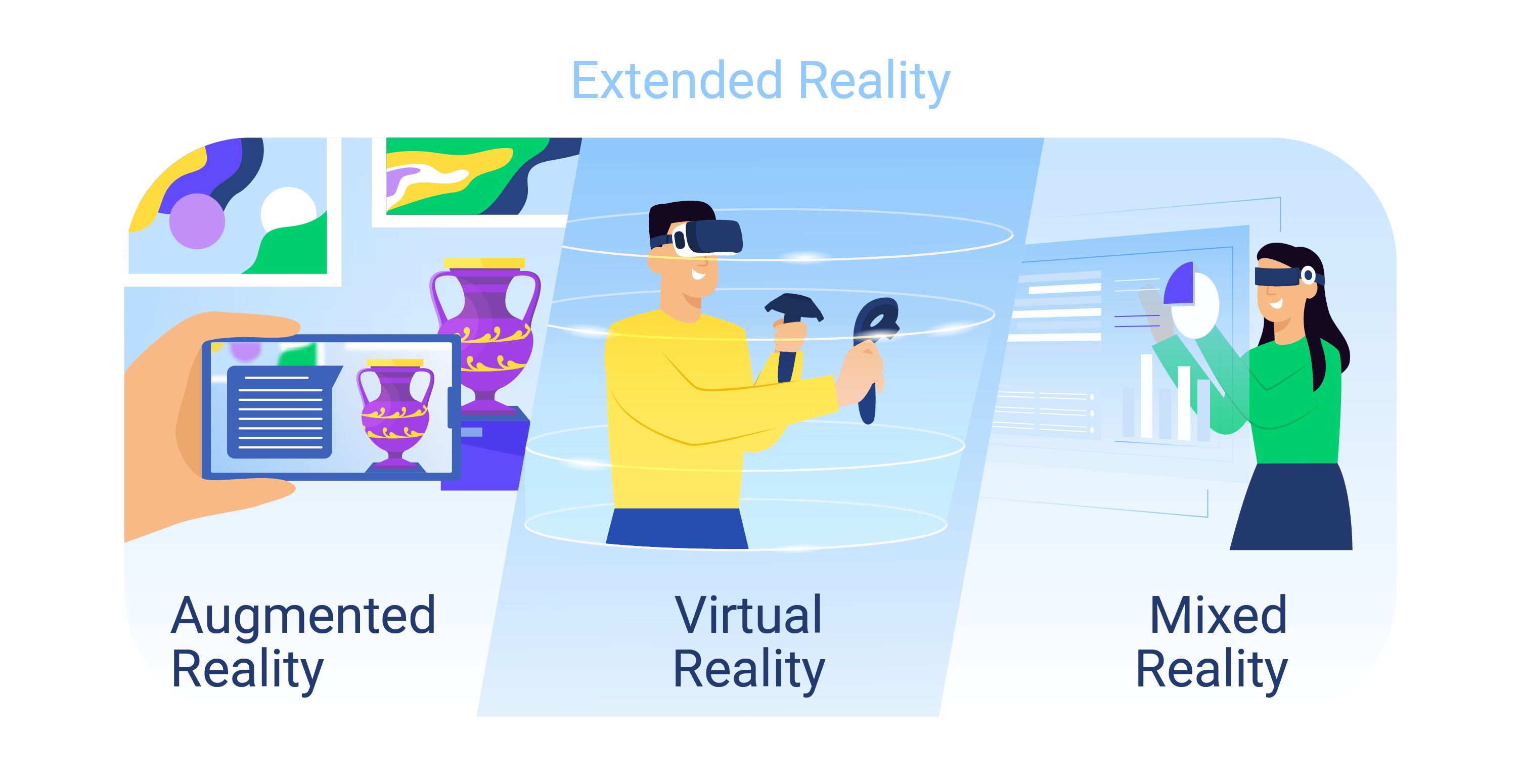XR is a new, exciting technology that everyone is talking about right now. So what does XR mean and when can it be used? Extended Reality, or XR, encompasses a variety of technologies that are related but not the same. XR combines concepts such as VR (virtual reality), AR (augmented reality), and MR (mixed reality).
Virtual Reality (VR)
VR refers to the creation of a virtual environment that mimics a real-world environment. An individual can interact physically with a computer-generated virtual environment by using a VR headset such as the Meta Quest 2.
Augmented Reality (AR)
In augmented reality, we add a digital output to a real-life environment, creating an immersive and interactive experience for users. In recent years, AR has become more mainstream because of mobile phone games such as Pokémon Go. Now, they are being incorporated into business and even medical applications through the use of Digital Twins.
Mixed Reality (MR)
By combining virtual reality and augmented reality, MR allows users to interact with real-world objects through virtual applications. The Microsoft HoloLens is one of the few enterprise devices that supports MR applications.
Summing up
There are three components that can be part of XR: VR, AR, and MR. With XR, users can experience a virtual world with artificial limitations, including time constraints, weather, social rules, and physical obstacles. It can provide a safe and controlled training environment for a variety of other markets, including education, military training, and therapy.
The rise of the metaverse will bring XR to the forefront with some vendors already using the term “Enterprise Metaverse”.
